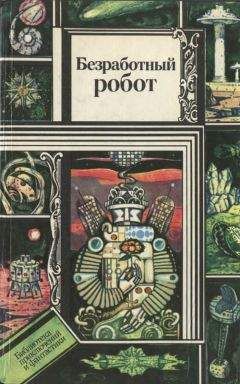Ася Казанцева - В интернете кто-то неправ! Научные исследования спорных вопросов

Помощь проекту
В интернете кто-то неправ! Научные исследования спорных вопросов читать книгу онлайн
17 Sammons B. et al. Characterization of drought-tolerant maize MON 87460 for use in environmental risk assessment // Crop Science, Mar-Apr 2014, Vol. 54, 719–729.
18 Gantz V., Bier E. The mutagenic chain reaction: A method for converting heterozygous to homozygous mutations // Science, Apr. 2015: Vol. 348, No. 6233, 442–444.
19 Liang P. et al. CRISPR/Cas9-mediated gene editing in human tripronuclear zygotes // Protein Cell, May 2015, Vol. 6, Issue 5, 363–372.
20 Kuiper H. et al. Adequacy of methods for testing the safety of genetically modifed foods // Lancet, Oct. 1999, Vol. 354, No. 9187, 1315–1316.
21 Пересказ отчета экспертов из Института Роберта Коха (не первоисточник, потому что я не умею гуглить и читать на немецком): http://www.gmo-safety.eu/archive/201.dead-dairy-cows-maize-under-suspicion.html
22 Nordlee J. et al. Identifcation of a Brazil-nut allergen in transgenic soybeans // New England Journal of Medicine, Mar. 1996, Vol. 334, 688–692.
23 Сайт Ирины Ермаковой: http://www.irina-ermakova.ru/
24 Ермакова И. В. Влияние сои с геном EPSPS CP4 на физиологическое состояние и репродуктивные функции крыс в первых двух поколениях // Современные проблемы науки и образования. Биологические науки. 2009, № 5, с. 15–20.
25 Marshall A. GM soybeans and health safety – a controversy reexamined // Nature Biotechnology, Sep. 2007, Vol. 25, No. 9, 981–987.
26 Ermakova I. GM soybeans – revisiting a controversial format // Nature Biotechnology, Dec. 2007, Vol. 25, No. 12, 1351–1354.
27 Chassy B. et al. Response to GM soybeans – revisiting a controversial format // Nature Biotechnology, Dec. 2007, Vol. 25, No. 12, 1356–1358.
28 Seralini G-E. et al. RETRACTED: Long term toxici-ty of a Roundup herbicide and a Roundup-tolerant genetically modifed maize // Food and Chemical Toxicology, Nov. 2012, Vol. 50, Issue 11, 4221–4231.
29 Prejean J. et al. Spontaneous Tumors in Sprague-Daw-ley Rats and Swiss Mice // Cancer Research, Nov. 1973, Vol. 33, 2768–2773.
30 Konig A. et al. Assessment of the safety of foods derived from genetically modifed (GM) crops // Food and Chemical Toxicology, 2004, Vol. 42, 1047–1088.
31 EFSA Panel on Genetically Modifed Organisms (GMO). Guidance for risk assessment of food and feed from genetically modifed plants. EFSA Journal, 2011, Vol. 9(5), 2150 [37 p.]. Доступно по ссылке: http://www.efsa.europa.eu/en/efsajour-nal/pub/2150.htm#
32 European Comission. A decade of EU-funded GMO research. 2010. Доступно по ссылке: https://ec.europa.eu/research/biosociety/pdf/a_decade_of_ eu-funded_gmo_research.pdf
33 Klumper W., Qaim M. A meta-analysis of the impacts of genetically modifed crops // PLoS One, Nov. 2014, Vol. 9(11), e111629.
34 Rhee G. S. et al. Multigeneration reproductive and developmental toxicity study of bar gene inserted into genetically modifed potato on rats // Journal of Toxicology and Environmental Health, Part A, Dec. 2005, Vol. 68(23–24), 2263–2276.
35 Snell C. et al. Assessment of the health impact of GM plant diets in long-term and multigenerational animal feeding trials: a literature review // Food and Chemical Toxicology, 2012, Vol. 50, 1134–1148.
36 Van Eenennaam A., Young E. Prevalence and impacts of genetically engineered feedstuffs on livestock populations // Journal of Animal Science, Nov. 2014, Vol. 92, No. 10, 4255–4278 (обращайте внимание на название журнала: эти же авторы описали свое исследование еще и в маленькой новостной статье для издания ISB News Report, оставив при этом тот же самый заголовок, что создает путаницу).
Глава 6. “Кто видел птицу с зубами?”1 Sherman M. Universal Genome in the Origin of Metazoa: Thoughts About Evolution // Cell Cycle, 2007, Vol. 6, Issue 15, 1873–1877.
2 Shoshani J. Understanding proboscidean evolution: a formidable task // Trends in Ecology and Evolution, Dec. 1998, Vol. 13, Issue 12, 480–487.
3 ВЦИОМ. Пресс-выпуск № 1372. Дарвинисты среди нас, или Кто создал человека и был ли всемирный потоп? 2009. http://wciom.ru/index.php?id=236&uid=12813.
4 Bloom P., Weisberg D. Childhood Origins of Adult Resistance to Science // Science, May 2007, Vol. 316, 996–997.
5 Kelemen D. Are children “intuitive theists”? Reasoning about purpose and design in nature // Psychological Science, May 2004, Vol. 15(5), 295–301.
6 Evans M. Cognitive and contextual factors in the emergence of diverse belief systems: creation versus evolution // Cognitive Psychology, May 2001, Vol. 42, 217–266.
7 Langergraber K. et al. Generation times in wild chimpanzees and gorillas suggest earlier divergence times in great ape and human evolution // PNAS, Sep. 2012, Vol. 109, No. 39, 15716–15721.
8 The chimpanzee sequencing and analysis consortium. Initial sequence of the chimpanzee genome and comparison with the human genome // Nature, Sep. 2005, Vo l. 437, 69–87.
9 Bourque G. Reconstructing the genomic architecture of ancestral mammals: lessons from human, mouse, and rat genomes // Genome Research, 2004 Apr., Vol. 14(4), 507–516.
10 Lee M. et al. Rates of phenotypic and genomic evolution during the cambrian explosion // Current Biology, Oct. 2013, Vol. 23, Issue 19, 1889–1895.
11 Erwin D. et al. The Cambrian conundrum: Early divergence and later ecological success in the early history of animals // Science, Nov. 2011, Vol. 334(6059), 1091–1097.
12 Jackson D. et al. Sponge paleogenomics reveals an ancient role for carbonic anhydrase in skeletogenesis // Science, June 2007, Vol. 316, No. 5833, 1893–1895.
13 Patterson N. et al. Genetic evidence for complex specia-tion of humans and chimpanzees // Nature, June 2006, Vol. 441, 1103–1108.
14 Suwa G. et al. A new species of great ape from the late Miocene epoch in Ethiopia // Nature, Aug. 2007, Vo l. 448, 921–924.
15 Prufer K. et al. The complete genome sequence of a Neanderthal from the Altai Mountains // Nature, Jan. 2014, Vol. 505(7481), 43–49.
16 Fu Q. et al. An early modern human from Romania with a recent Neanderthal ancestor // Nature, Aug. 2015, Vol. 524(7564), 216–219.
17 Coates M. Visual ecology and functional morphology of Cubozoa (Cnidaria) // Integrative and Comparative Biology, 2003, Vol. 43(4), 542–548.
18 Gavelis G. et al. Eye-like ocelloids are built from different endosymbiotically acquired components // Nature, July 2015, Vol. 523, 204–207.
19 Serb J. and Eernisse D. Charting evolution’s trajectory: using molluscan eye diversity to understand parallel and convergent evolution // Evolution: Education and Outreach, Oct. 2008, Vol. 1, Issue 4, 439–447.
20 Dial K. et al. What Use is half a wing in the ecology and evolution of birds? // BioScience, May 2006, 56 (5), 437–445.
21 Sumida S. and Brochu C. Phylogenetic context for the origin of feathers // Amer. Zool., Aug. 2000, Vol. 40(4), 486–503.
22 Dimond C. et al. Feathers, dinosaurs, and behavioral cues: defning the visual display hypothesis for the adaptive function of feathers in non-avian theropods // BIOS, Sep. 2011, Vol. 82(3), 58–63.
23 Thorpe et al. Origin of human bipedalism as an adaptation for locomotion on fexible branches // Science, June 2007, Vol. 316, No. 5829, 1328–1331.
24 Blount Z. et al. Historical contingency and the evolution of a key innovation in an experimental population of Escherichia coli // PNAS, June 2008, Vol. 105(23), 7899–7906.
25 Lucas J. et al. The evolution of fungicide resistance // Advances in Applied Microbiology, 2015, Vol. 90, 29–92.
26 Gilbert J. and Manica A. The evolution of parental care in insects: A test of current hypotheses // Evolution, May 2015, Vol. 69(5), 1255–1270.
27 Breggin P. The biological evolution of guilt, shame and anxiety: A new theory of negative legacy emotions // Medical Hypotheses, July 2015, Vol. 85(1), 17–24.
28 Список ученых, подписавших письмо, которое как бы поддерживает концепцию разумного замысла: http://www.dissentfromdarwin.org/
29 Оценка числа ученых в США: http://www.nsf.gov/statistics/ infbrief/nsf02325/
30 Проект Стива: http://ncse.com/taking-action/project-steve
Глава 7. “Пора запретить опыты над животными!”1 National center for education statistics – ценнейший кладезь данных о любых аспектах американского образования. Данные о биологах – по ссылке http://nces. ed.gov/programs/digest/d14/tables/dt14_325.22.asp
2 U. S. Congress, Offce of Technology Assessment. Alternatives to Animal Use in Research, Testing, and Education. Washington, DC: U. S. Government Printing Offce, OTA-BA-273, February 1986. Документ доступен по ссылке: http://govin-fo.library.unt.edu/ota/Ota_3/DATA/1986/8601.PDF
3 Taylor K. et al. Estimates for worldwide laboratory animal use in 2005 // Alternatives to Laboratory Animals, 2008 July, Vol. 36(3), 327–342.
4 График, наглядно демонстрирующий снижение числа экспериментальных животных в последние годы, доступен по ссылке: http://speakingofresearch.com/facts/statistics/, а данные, на которых он основан, собраны Службой по контролю здоровья животных и растений при Министерстве сельского хозяйства США: http://www.aphis.usda.gov/ wps/portal/aphis/ourfocus/animalwelfare/ (вкладка Research Facility Annual Reports).
5 Число забитых в 2014 году животных по данным Министерства сельского хозяйства США: по первой ссылке птицы, по второй млекопитающие. http://www.nass. usda.gov/Publications/Todays_Reports/reports/pslaan15.pdf, http://www.nass.usda.gov/Publications/Todays_Reports/re-ports/ lstk0415.pdf
6 Данные Хоум-офиса, подразделения британского правительства по вопросам общественной безопасности. Home offce. Annual Statistics of Scientifc Procedures on Living Animals. Great Britain, 2013. Публикация доступна по ссылке: https://www.gov.uk/government/uploads/system/up-loads/attachment_data/fle/327854/spanimals13.pdf.
7 Bagle T. et al. Transgenic animals and their application in medicine // International Journal of Medical Research & Health Sciences, 2013, Vol. 1, Issue 2, 107–116.
8 Hurst J. et al. An extended family with a dominantly inherited speech disorder // Developmental Medicine & Child Neurology, Apr. 1990, Vol. 32, Id. 4, 352–355.
9 Haesler S. et al. Incomplete and inaccurate vocal imitation after knockdown of FoxP2 in songbird basal ganglia nucleus area X // PLoS Biology, Dec. 2007, Vol. 5(12), e321.
10 Shu W. et al. Altered ultrasonic vocalization in mice with a disruption in the Foxp2 gene // PNAS, July 2005; Vol. 102(27), 9643–9648.
11 Enard W. et al. A humanized version of Foxp2 affects cor-tico-basal ganglia circuits in mice // Cell, May 2009, Vol. 137, Issue 5, 961–971.
12 Schreiweis C. et al. Humanized Foxp2 accelerates learning by enhancing transitions from declarative to procedural performance // PNAS, Sep. 2014, Vol. 111(39), 14253–14258.
13 Hajar R. Animal testing and medicine // Heart Views, 2011 Jan-Mar, Vol. 12(1), 42.
14 Ballentine C. Taste of raspberries, taste of death. The 1937 Elixir Sulfanilamide incident // FDA Consumer magazine, June 1981. Текст доступен по ссылке: http://www.fda.gov/ aboutfda/whatwedo/history/productregulation/sulfanilamide-disaster/default.htm
15 Silverman W. The schizophrenic career of a “monster drug” // Pediatrics, 2002 Aug., Vol. 110(2 Pt. 1), 404–406.
16 Richardson P. et al. Thalidomide: emerging role in cancer medicine // Annual Review of Medicine, Feb. 2002, Vol. 53, 629–657.
17 Teo S. et al. Thalidomide in the treatment of leprosy // Microbes and Infection, 2002, Vol. 4, 1193–1202.
18 Книга The Principles of Humane Experimental Technique выложена в открытом доступе на сайте университета Джонса Хопкинса: http://altweb.jhsph.edu/pubs/books/hu-mane_exp/het-toc
19 Doke S. and Dhawale S. Alternatives to animal testing: a review // Saudi Pharmaceutical Journal, July 2015, Vol. 23, Issue 3, 223–229.
20 Adler S. et al. Alternative (non-animal) methods for cosmetics testing: current status and future prospects – 2010 // Archives of Toxicolog y, 2011, V o l. 85, 367–485.
Глава 8. “Мясо вредно для здоровья”1 Pruetz J. et al. New evidence on the tool-assisted hunting exhibited by chimpanzees (Pan troglodytes verus) in a savannah habitat at Fongoli, Sénégal // Royal Society Open Science, Apr. 2015, Vol. 2, 140507.
2 Watts D. Environmental infuences on mountain gorilla time budgets // American Journal of Primatology, 1988, Vol. 15(3), 195–211.
3 Doran D. Infuence of seasonality on activity patterns, feeding behavior, ranging, and grouping patterns in taï chimpanzees // International Journal of Primatology, Apr. 1997, Vol. 18, Issue 2, 183–206.
4 Balter V. et al. Evidence for dietary change but not landscape use in South African early hominins // Nature, Sep. 2012, Vol. 489, 558–560.

























